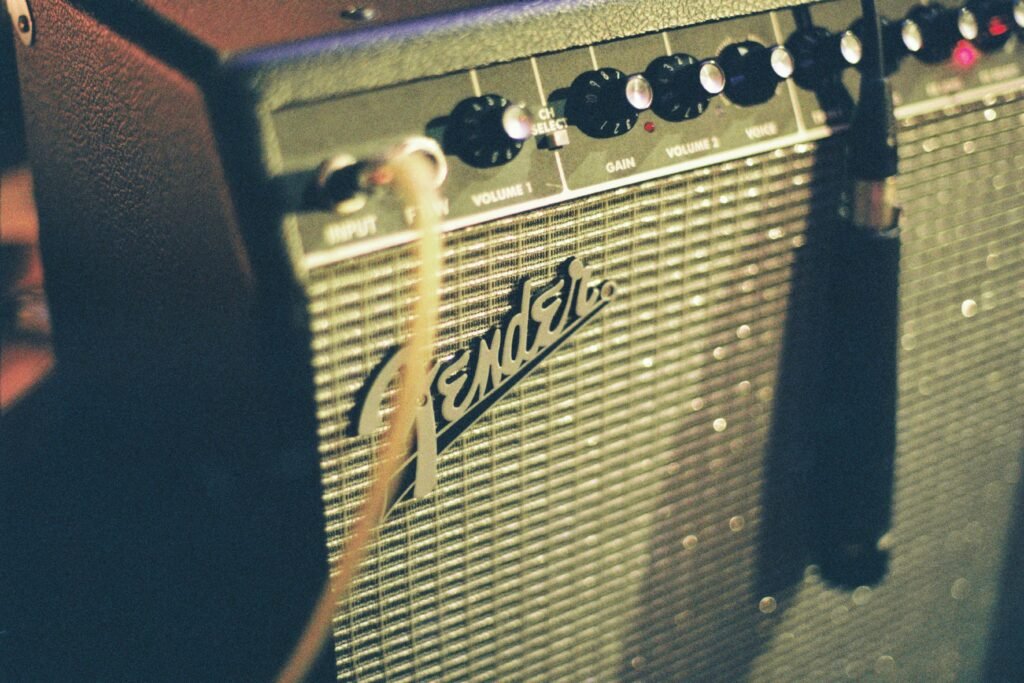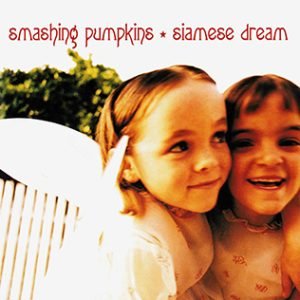Released in 1993, Siamese Dream is The Smashing Pumpkins’ second studio album, marking a defining moment not only for the band but for the entire alternative rock scene of the early ‘90s. Following their 1991 debut, Gish, which carved out a space for the band within the underground rock circuit, Siamese Dream both expanded on and intensified the group’s sound. With this album, The Smashing Pumpkins captured the essence of a turbulent era, while pushing against the expectations set by their contemporaries in the grunge-dominated scene of Seattle. Siamese Dream embraced lush, layered production and genre-blurring compositions that defied easy categorization.
Artistic Intentions
At a time when much of the alternative rock world leaned toward a raw, stripped-down aesthetic, Siamese Dream was a sonic gamble, aiming for an ambitious, expansive soundscape. Frontman and primary songwriter Billy Corgan, alongside producer Butch Vig (known for his work on Nirvana’s Nevermind), meticulously crafted an album that married emotional vulnerability with a wall of distorted guitars and intricate production layers.
Corgan has spoken extensively about his artistic vision for the album: he sought to create something both beautiful and intense, a “psychedelic goth-rock opera” that explored the peaks and valleys of personal struggle. Dealing with themes of mental health, identity, and existential doubt, Siamese Dream was also profoundly shaped by Corgan’s own battles with depression, alienation, and creative ambition.
Sonic Exploration

Siamese Dream stands out as a masterclass in high-gloss production fused with raw emotional depth, a combination that gives the album both power and accessibility. Far from the lo-fi, gritty sounds characteristic of early ’90s grunge, The Smashing Pumpkins and producer Butch Vig opted for a refined, highly polished production. This precision allowed for a level of clarity and detail unusual for alternative rock at the time, showcasing Billy Corgan’s complex vision in full.
Vig’s meticulous approach to sound helped shape an album where each layer—from the roaring guitar overdubs to the understated background vocals—was distinct and integral. This polished approach elevates the music’s emotional and thematic weight, giving Siamese Dream an almost cinematic quality that immerses listeners in the highs and lows of Corgan’s introspective lyrics.
Musical Arrangements
Instrumentally, Siamese Dream is ambitious and multi-layered, defined by dense guitar arrangements and powerful dynamics. Corgan’s obsessive perfectionism reportedly led to hundreds of guitar overdubs, resulting in a rich, cascading sound that gives the album its distinctive texture. Tracks like “Cherub Rock” and “Geek U.S.A.” deliver a barrage of guitar riffs that merge punk energy with psychedelic, almost shoegaze-like atmospheres. The intricate arrangements aren’t limited to guitars; Jimmy Chamberlin’s drumming is precise and intensely driven, weaving complex rhythms into the dense wall of sound. His jazz-influenced beats add sophistication and depth to tracks like “Mayonaise” and “Silverfuck,” where his drumming shifts seamlessly from thunderous force to delicate touches, underscoring the album’s emotional turbulence.
Vocally, Corgan’s voice became a signature aspect of the album’s sound, as he veered between vulnerability and defiance. His layered vocals lend an ethereal quality to songs like “Disarm” and “Hummer,” where whispered verses bloom into full-bodied, anguished choruses. This mix of delicate and powerful vocal work highlights the contrasts at the core of Siamese Dream: beauty and aggression, hope and despair. The combination of these elements allows the album to convey a profound sense of longing and introspection, themes that resonate deeply with listeners.
Genre Elements
In terms of genre, Siamese Dream is an eclectic blend, rooted in alternative rock but branching out into neo-psychedelia, dream pop, heavy metal, and shoegaze. The band took the grit of grunge and infused it with a spacious, layered sound more commonly associated with shoegaze acts like My Bloody Valentine. This genre-blurring approach allowed The Smashing Pumpkins to create a sound that was heavier than traditional alt-rock but more refined than grunge, resulting in a timeless record that transcends easy classification. Through its seamless fusion of styles and uncompromising production, Siamese Dream not only captured the zeitgeist but also pushed the boundaries of what alternative rock could achieve, setting a high bar for other artists of the era.
Lyrical Analysis

The lyrics of Siamese Dream are haunting, introspective, and often poetic explorations of inner conflict, identity, and the search for meaning amid chaos. Central themes of alienation, self-doubt, and longing for connection permeate the album, with Billy Corgan’s lyrics reflecting his own struggles with depression and feelings of inadequacy. Songs like “Today” deceptively mask existential despair under upbeat melodies, revealing a complex blend of optimism and pain—a mix that underscores much of the album. In Siamese Dream, Corgan often expresses a simultaneous yearning for escape and for self-acceptance, themes that make the album resonate with listeners who feel caught between despair and hope.
Themes
Recurring motifs of childhood innocence and lost dreams can be found throughout the album, notably in “Disarm,” where Corgan’s lyrics confront the lingering impact of a difficult past. Phrases like “cut that little child inside of me and such a part of you” evoke deep emotional scars, suggesting a painful journey through trauma that still shapes the adult self. “Rocket” channels this sense of searching with its lines “I shall be free, free of those voices inside me,” expressing a mix of freedom and uncertainty about what comes next. The album’s lyrical motifs often circle back to the feeling of being trapped or weighed down, both by external expectations and internal struggles.
Corgan’s lyrics are both vivid and open to interpretation, moving between narrative clarity and abstract metaphors that deepen the album’s mystique. While some tracks, like “Today,” tell a more straightforward story—paradoxically capturing the blend of personal despair and the determination to press on—other songs like “Hummer” and “Soma” are more abstract, with lyrics that evoke moods rather than linear stories. Lines like “When I woke up from that sleep, I was happier than I’d ever been” in “Hummer” add a surreal, almost dreamlike quality to the album. This balance between concrete and abstract storytelling allows listeners to project their own experiences onto the music, making Siamese Dream feel deeply personal and universal at once.
Emotional Impact
Emotionally, the lyrics are a driving force in the album’s impact, enhancing the music’s raw, emotive qualities. Corgan’s confessional writing style and vulnerable voice convey a palpable sense of isolation and longing, drawing listeners into his inner world. The emotional peaks and valleys throughout Siamese Dream resonate profoundly, as tracks like “Disarm” and “Mayonaise” deliver an almost cathartic release. The intensity and vulnerability of the lyrics allow the album to be both a mirror and a balm for listeners, echoing shared feelings of pain and disillusionment while also providing solace. The words of Siamese Dream are less about offering answers and more about validating the questions—contemplating the wounds, dreams, and doubts that so often define the human experience.
Cohesion and Flow

Siamese Dream is a strikingly cohesive work that feels meticulously crafted to take listeners on a journey through the highs and lows of Billy Corgan’s introspective and emotional landscape. From the opening track, “Cherub Rock,” to the closer, “Luna,” the album flows with a deliberate sense of narrative and emotional pacing. Each track seems to build upon the last, creating an ebb and flow of intensity that gives Siamese Dream a remarkable sense of continuity.
While each song can stand alone, together they form a larger arc of catharsis, moving from defiance and self-doubt toward something resembling acceptance, if not peace. The album’s progression captures a cyclical journey through darkness and light, making it feel like a complete, self-contained experience rather than just a collection of songs.
The emotional and sonic journey begins with “Cherub Rock,” a rebellious anthem that defies outside expectations, and transitions into the frenetic energy of “Quiet” and the bittersweet optimism of “Today.” This deliberate pacing helps anchor the album, giving listeners a chance to settle into each emotional tone before being led into a new one. The album’s midsection, which includes tracks like “Disarm,” “Soma,” and “Geek U.S.A.,” intensifies in complexity and emotional weight, with Corgan’s lyrics and the band’s instrumentation reflecting a range of vulnerability, nostalgia, and anger.
By the time listeners reach “Mayonaise,” one of the album’s most contemplative and beloved tracks, the emotional crescendo has been set—only to wind back down through more reflective tracks like “Silverfuck” and finally, “Luna.” This journey through peaks and valleys creates a natural rhythm that heightens the impact of each song and gives the album its cohesive, almost narrative quality.
Thematic Consistency
In terms of thematic consistency, Siamese Dream feels remarkably unified. Thematically, Corgan stays close to his exploration of alienation, longing, and resilience, using a consistent mix of poetic and raw lyrics to convey these feelings. Musically, too, the album is held together by its distinctive blend of heavy guitar textures, intricate rhythms, and ethereal vocal layers. While Siamese Dream covers a variety of genres—from the psychedelic haze of “Hummer” to the grunge-inspired grit of “Geek U.S.A.”—each song is bound by the band’s unmistakable sound, making even stylistic detours feel like a natural part of the album’s landscape.
Standout Tracks and Moments
Siamese Dream is packed with unforgettable tracks and moments that underscore The Smashing Pumpkins’ prowess in blending raw emotion with meticulous production. Among the album’s many highlights, a few key tracks stand out for their artistic depth, innovative structure, and emotional resonance.
Cherub Rock
“Cherub Rock” opens the album with a rallying, rebellious tone, combining heavy riffs with Corgan’s defiant vocals. The track’s iconic, slow-building intro—an unforgettably distorted guitar line layered over a marching drum beat—sets the stage for the album’s immersive soundscape. As the chorus explodes with, “Let me out!” it embodies the album’s theme of resistance against conformity, a powerful statement that establishes the emotional and sonic intensity of Siamese Dream from the outset.
Today
“Today” is a standout for its paradoxical blend of bright, almost jubilant melodies with darker lyrical undertones. Written during a period of deep personal struggle, Corgan’s lyrics capture a fragile balance between despair and optimism. The hook, “Today is the greatest day I’ve ever known,” feels ironic but deeply earnest, and the song’s energetic riff captures a sense of movement, suggesting that life’s peaks and valleys are inextricably linked. The juxtaposition between its upbeat sound and melancholic message makes “Today” one of the album’s most enduring and accessible tracks, capturing the emotional complexity of Siamese Dream.
Disarm
“Disarm” is one of the album’s most haunting tracks, showcasing Corgan’s introspective lyricism and vulnerability. Stripped down to acoustic guitar and orchestral strings, it diverges from the heavy guitar layers of other songs, creating an atmosphere of naked emotional honesty. The lyrics, “The killer in me is the killer in you,” resonate with a haunting ambiguity that evokes pain, empathy, and regret, adding depth to the album’s themes of personal struggle and reconciliation. This raw, orchestrated moment on the album exemplifies the band’s ability to convey vulnerability without abandoning intensity.
Mayonaise
“Mayonaise” is often hailed by fans as one of the album’s finest tracks, and for good reason. Its sweeping, almost dreamlike quality captures the band’s mastery of blending soft and hard dynamics. The intricate, chiming guitar riff intertwines with distorted layers, creating an effect that feels expansive yet intimate. The lyrics—“Fool enough to almost be it, cool enough to not quite see it”—convey a profound sense of bittersweet resignation, making “Mayonaise” feel like the emotional heart of the album. This track encapsulates the feeling of longing and self-acceptance that runs throughout Siamese Dream, solidifying it as a fan favorite.
Memorable Moments
Memorable moments abound within these standout tracks and others. The layered guitar solo on “Hummer” serves as a transcendental escape, where fuzzed-out effects meet glistening, clean tones, adding a hallucinatory feel to the song’s introspective lyrics. In “Soma”, an atmospheric interlude of near silence gives way to an explosive guitar break that showcases Corgan’s talent for using dynamics to heighten emotional impact. This dramatic pause followed by the surge of sound is one of the most cathartic moments on the album, embodying the oscillation between emptiness and intensity that defines Siamese Dream.
In “Silverfuck”, a lengthy, chaotic jam session culminates in an almost meditative breakdown, showcasing the band’s willingness to experiment with structure and abandon traditional song forms. This break offers a moment of reflection within the track’s frenetic energy, capturing the album’s themes of inner turmoil and catharsis in a visceral, sonic form.
Artistic Contribution and Innovation

Siamese Dream is widely regarded as a landmark in the alternative rock genre and an album that helped shape the musical landscape of the 1990s. While the early ’90s were dominated by the raw, unpolished sounds of grunge, The Smashing Pumpkins approached alternative rock from a distinctly different angle, pushing the boundaries of genre with a meticulousness and musical ambition that set them apart.
This dedication to a lush, layered sound was a bold deviation from the gritty minimalism that characterized the music of their Seattle-based contemporaries. By infusing the core of alt-rock with elements of shoegaze, dream pop, and neo-psychedelia, Siamese Dream carved out a unique place in the genre, establishing The Smashing Pumpkins as pioneers willing to expand alternative rock’s sonic vocabulary.
Production
The album’s production quality stands as a testament to this innovation. Under the careful direction of Butch Vig and Billy Corgan, Siamese Dream achieved a dense, layered sound that was revolutionary for the time. Vig, fresh from producing Nirvana’s Nevermind, used his production expertise to help Corgan realize his grand, symphonic vision. Hundreds of guitar overdubs and multiple vocal layers created a “wall of sound” effect that gave the album a near-orchestral depth.
This relentless dedication to sonic richness was risky, especially within the typically DIY ethos of alternative rock, but it paid off. The attention to detail not only showcased Corgan’s and Vig’s ambition but also contributed to a listening experience that felt immersive and complex, encouraging fans and critics to view alternative music as capable of high production values without sacrificing authenticity.
Genre Blending
Beyond its production, Siamese Dream was groundbreaking in its approach to genre-blending. The Smashing Pumpkins mixed the heaviness of grunge with the swirling textures of shoegaze and the expansive structures of classic rock, creating a sound that defied easy categorization. Tracks like “Hummer” and “Silverfuck” stretch beyond the conventional song form, with extended instrumental passages that feel almost symphonic in their progression. This genre fluidity was further enhanced by Jimmy Chamberlin’s technically skilled drumming, which added a jazz-influenced rhythm complexity unusual for rock at the time. These genre-crossing qualities made the album a touchstone for countless bands who would later explore hybrid sounds in alternative rock and metal.
Themes
Thematically, Siamese Dream also broke new ground. At a time when many rock bands relied on irony or anger to convey discontent, The Smashing Pumpkins approached themes of depression, identity, and emotional trauma with a rare vulnerability. Corgan’s lyrics delve into deeply personal territory, confronting issues like self-doubt and existential angst in a way that was introspective yet universally resonant. This willingness to reveal raw, unfiltered emotions contributed to the album’s lasting appeal and expanded the range of what alternative rock could address, paving the way for later artists who would similarly explore mental health and vulnerability within the genre.
In retrospect, Siamese Dream not only pushed the creative limits of alternative rock but also influenced the direction of rock music in general, inspiring future artists to embrace both complexity and introspection. Its impact on alternative and indie rock reverberates to this day, from the ambitious production styles of bands like Radiohead and Muse to the introspective themes found in modern alternative music. With its genre-defying sound, painstakingly crafted production, and emotionally charged lyricism, Siamese Dream stands as a testament to The Smashing Pumpkins’ innovative spirit, redefining what rock could sound like and what it could express.
Closing Thoughts

Siamese Dream is a towering achievement in alternative rock, balancing emotional rawness with musical sophistication in a way that few albums have managed to replicate. Its strengths lie in its intricate production, which brought a new level of polish and layering to a genre often characterized by grit and minimalism. Corgan’s visionary songwriting, paired with Butch Vig’s deft production, created a lush, multi-dimensional soundscape that remains immersive and fresh decades later. Tracks like “Today,” “Disarm,” and “Mayonaise” reveal a deeply personal yet universally relatable exploration of pain, resilience, and the search for meaning. This emotional transparency, combined with genre-defying musical elements, helped Siamese Dream reach a broad audience, securing its status as a cultural and musical milestone.
The album’s weaknesses, though minor, stem from its intensity and singular vision, which may feel overwhelming or even indulgent to some listeners. Corgan’s perfectionism can occasionally come across as relentless, with every song pushing the sonic and emotional boundaries. For listeners looking for a more diverse tonal range or lighter themes, the album’s weight can feel demanding. However, this intensity is also part of its appeal, as it fully commits to its vision of exploring both light and dark emotions with unrestrained honesty.
Place in Career
Overall, Siamese Dream is an album that rewards deep listening, inviting fans to lose themselves in its layers of sound and its emotional landscape. It remains one of The Smashing Pumpkins’ crowning achievements, a testament to their artistic ambition and willingness to take risks that paid off. For listeners, it’s an album that not only captures the turbulence of the ’90s but also resonates with anyone seeking music that feels both cathartic and uplifting.
Official Rating
The album’s technical brilliance, emotional depth, and groundbreaking production secure its place as one of the definitive works in alternative rock. While it may lack the lighter moments or stylistic variety found in other classic albums, its cohesive vision and daring complexity more than make up for these elements. Siamese Dream is not just an album; it’s an experience—one that will continue to captivate and inspire listeners for generations.
